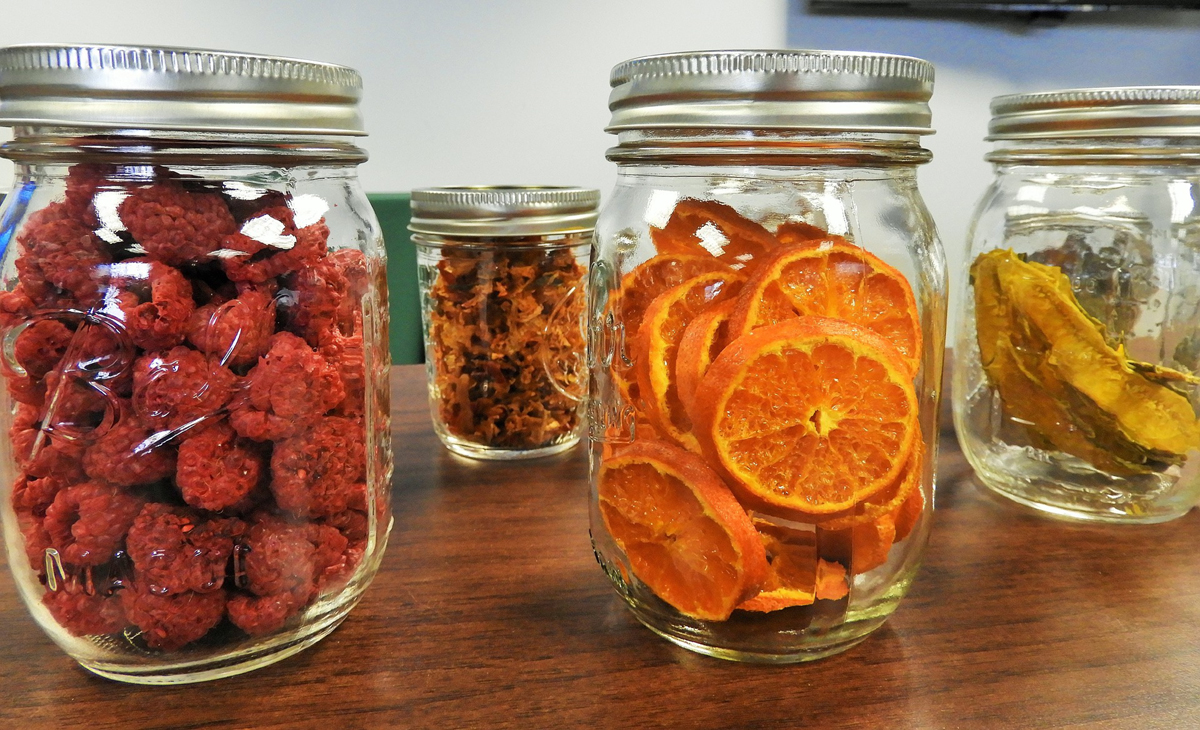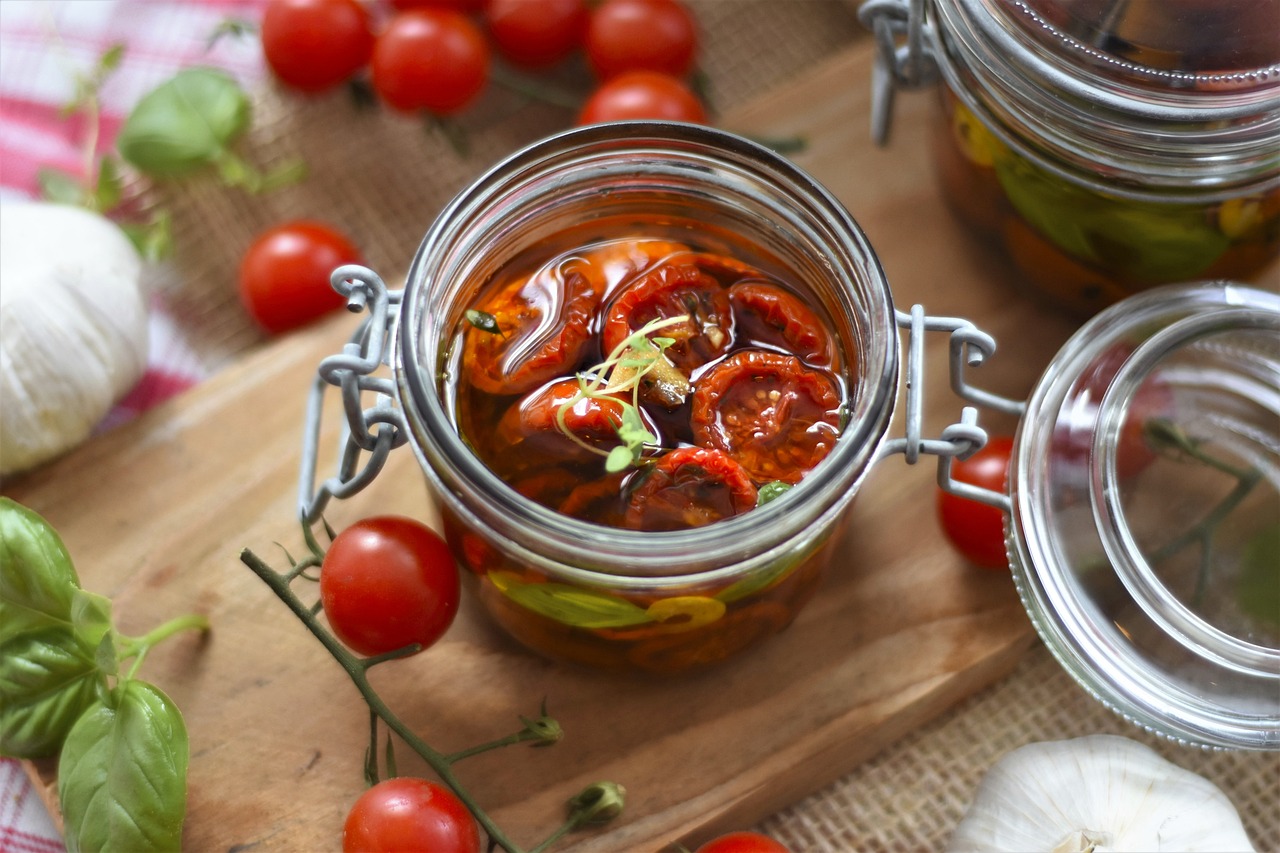Freeze Dried and Dehydrated Foods: Which Is The Better Method for Long Term Survival Food Storage

The Process of Freeze-Drying
Freeze-drying is a complex process of preserving fresh or already-cooked food by removing up to 98% of the food’s moisture, leaving intact the food’s texture, flavor, aroma and nutritional value.
The process requires that the fresh or cooked food be quickly frozen at temperatures as low as -50ºC. The frozen food is then placed into a vacuum chamber. This vacuum chamber lowers the pressure, and raises the temperature to just about 0ºC.
At this specific temperature and pressure, the ice crystals in the food evaporate into water vapor, bypassing water’s liquid form, through a process called sublimation.
This process preserves the cell structure and nutritional content of the food, resulting in a product that, when re-hydrated, very closely resembles the original food.
The process also prevents the water from being reabsorbed by the food and thus decreases its weight significantly.
Most food items such as fruits, vegetables and meats are well-suited to freeze-drying, and can be used for long-term food storage and preservation.
The Process of Dehydration
Dehydrating food is a food preservation method which has been used for centuries. Native Americans dehydrated their buffalo kills in their hunting camps to make it simpler to transport. Pemmican (a dehydrated concoction of buffalo meat mixed with fat and berries) was a staple of many of the nomadic North American tribes. This low-heat dehydration process involved either air drying (with nearby campfires), or sun drying strips of meat on drying racks.
Dehydrators are a modern method for slowly removing the moisture from food without actually cooking it. A drawback of dehydration is the limited amount of food which can be dried at one time. The positive aspect of dehydration is that this method of processing for food storage can be easily done at home.
How Do These Two Methods Affect The Food?
Freeze-dried foods preserve much of the original color, shape, aroma and freshness of fruits, vegetables and meats. Freeze-dried food does not usually contain additives or preservatives, so it remains true to its original form. And the look, texture and flavor of the food remains after re-hydration.
Unlike low-heat dehydration, freeze-drying allows for the preservation of pre-cooked meals, including recipes such as soups, stews, stroganoff, and the like. An obvious benefit is that since the meal was prepared in its entirety prior to freeze-drying, all you need to do is simply add water, then heat for a few minutes in order to create sumptuous meals.
Rehydrating freeze-dried food takes just a few minutes, simply by adding boiling water. Some foods, like many fruits and vegetables, need no re-hydration before eating.
Dehydrated foods shrink during processing as the moisture is removed. So the food item itself is considerably smaller than its original size.
The re-hydration time of dehydrated foods takes a bit longer than freeze-dried, but it stills tastes like the original form of the food. Some dehydrated foods contain added ingredients to enhance flavors or assist in preservation. As with freeze-dried fruits and vegetables, dehydrated fruits and vegetables can be eaten without any re-hydration.
Both methods of food preservation increase the long-term storage life of food. Most commercially produced freeze-dried and dehydrated foods have a shelf life of 15 to 20 years, if properly packaged and stored in a cool, dry environment.
In addition to their being a reliable source of food in an emergency or long-term survival scenario, because of their light weight and ease of portability, these foods are also great for taking on camping, hiking and hunting trips. They are also a wise choice to keep in an emergency road-side kit for the car, or in your bug out bag.
If you choose to keep these foods in your car as part of an emergency kit, please remember to rotate them periodically. Temperatures in a car can reach extremes, both hot and cold. High heat as well as continuous temperature fluctuations contribute to quicker degradation of both dehydrated and freeze-dried foods.
Which Type is Better for Consumption?
Everyone is different, and each person has their own personal tastes and preferences. With that in mind, there are a few things to consider before making a decision between freeze-dried or dehydrated food.
Home-grown fruits and vegetables are better preserved via dehydration, since the average person cannot afford the costly machinery used in freeze-drying.
Foods used in everyday cooking and meal preparation should probably be freeze-dried. This permits the food to be quickly re-hydrated as it is cooked prior to serving. If accessibility and portability are important, than either type of preserved food should meet those particular needs. Once again, it’s a matter of personal preferences.
In a nutshell, both dehydrated and freeze-dried foods are excellent choices for long-term food storage, as well as for daily use or for hiking, camping, etc. They both provide light-weight, portable, convenient foods. The primary difference is that freeze-dried foods tend to better preserve the shape, texture and flavors of the original food.
Most people will find that a combination will work best for their needs. Single-item foods such as vegetables, potatoes, and other staples and grains are well-suited to low-heat dehydration. Freeze-drying is more appropriate for meats and fruits (whose texture can be preserved), and for pre-cooked meals with a variety of ingredients such as soups, stews and sauces.
As you incorporate freeze-dried and dehydrated foods into your lifestyle, whether for camping and recreation, convenience, or as a survival strategy, you will learn which items you prefer to be dehydrated, and which you prefer to be freeze-dried. In either case, be assured that your choices will offer the peace of mind of knowing that you have a reliable source of food in virtually any situation.
The Author:
To learn more about Emergency Food Storage, and other disaster and preparedness topics, please visit our website at Knight Owl Survival Store.
Photo. CSU Extension








